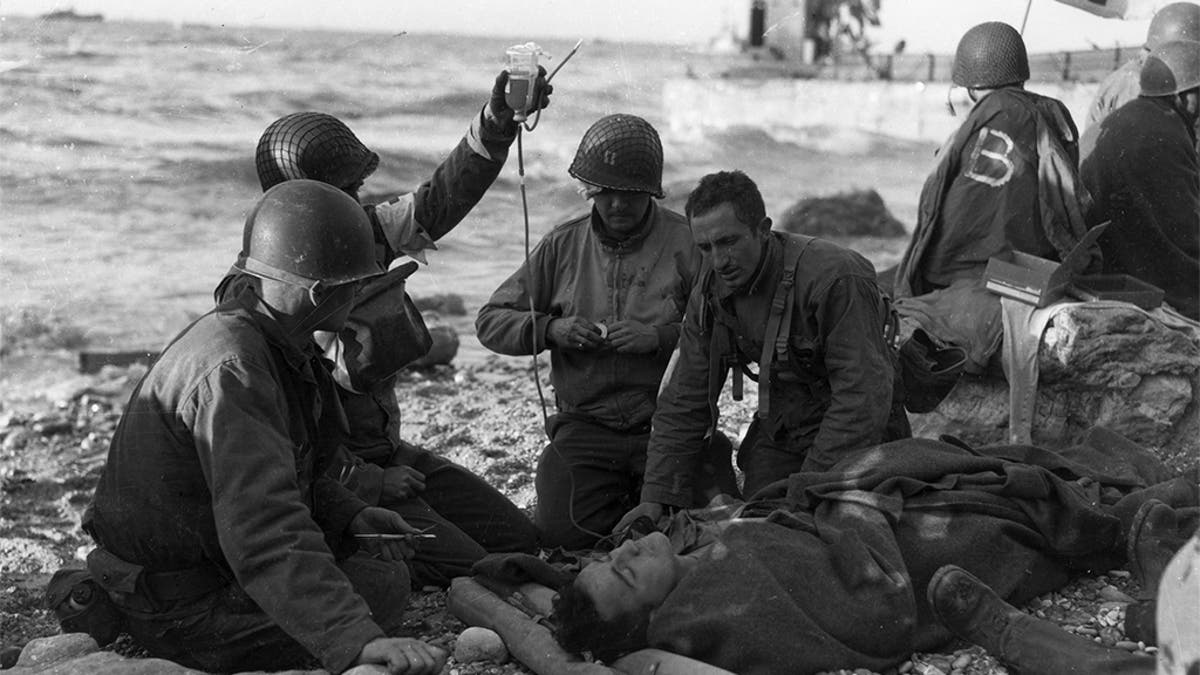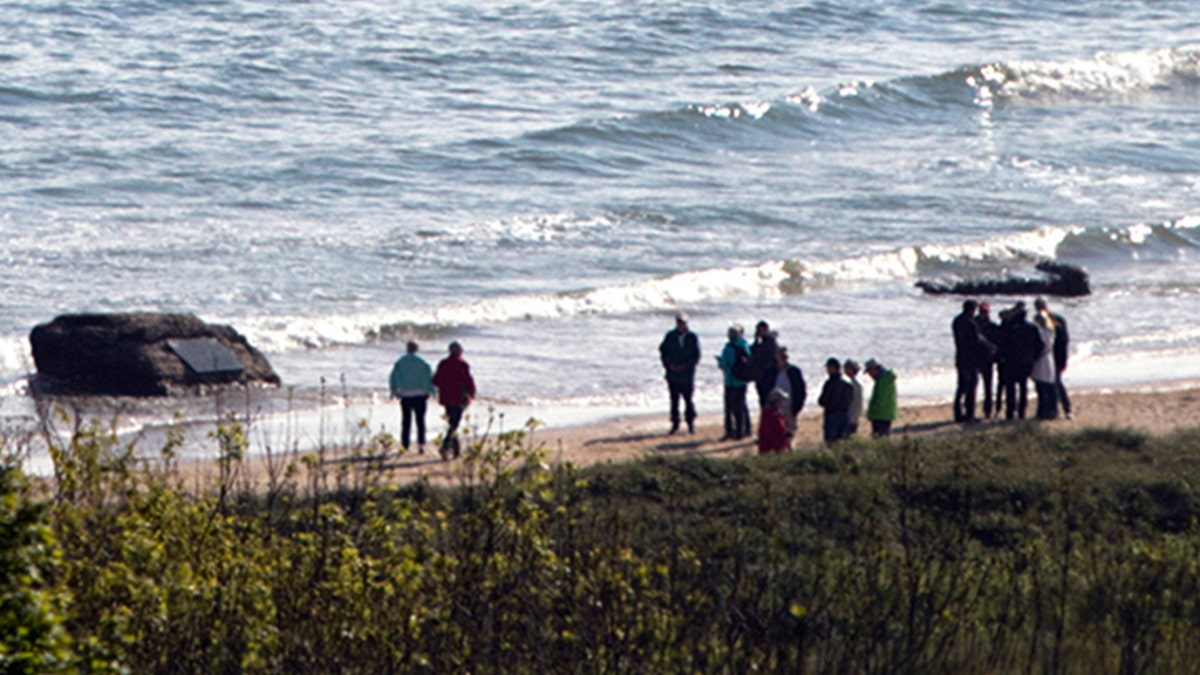
FILE -- June 12, 1944: American medics administer a plasma transfusion to a survivor of a landing craft sunk off the coast of northern France. (Photo by Weintraub/MPI/Getty Images)
Seventy-five years ago this June 6, some 150,000 men stormed the beaches of northern France, opening the way to the defeat of Nazi Germany. It was an operation so bloody and so iconic that has become known to history simply as “D-Day.”
The beaches in Normandy, particularly those in the area of Colleville-sur-Mer, were barricaded with steel traps, mines, barbed wire; gun emplacements and bunkers lined the ridges above them, machine gun nests covered very inch of sand. Today if you walk the beach below Colleville, you’ll see no sign of these things. If you go early enough, you may see riders exercising their horses in the firm sand, or watch a parasail cross above the shallow surf. Later, bathers will spread their towels and kids will splash in the waves.
ROBERT CHARLES: I TALKED WITH A D-DAY VET - HERE'S WHY YOU NEED TO DO SO, TOO
There is only one monument on the sand near Colleville-sur-Mer, and from the distance it looks not like a monument at all. It’s a slab of aggregate, concrete, cement, and rock left by the Germans while constructing obstacles, left by the French as the sole reminder at the water of so many tragedies and so much courage.
There is a plaque on the rock facing Colleville, again the sole plaque at the water’s edge. It commemorates the men on D-Day who tried to save lives, rather than take them – the combat medics of the 16th Infantry’s Second Battalion, led by Staff Sergeant Ray Lambert.

People stand near a memorial plaque for World War II medics on Omaha Beach at the foot of Normandy American Cemetery in Colleville-sur-Mer, France, Friday, May 3, 2019. (AP Photo/Virginia Mayo)
Thirty names are inscribed on the bronze plate. Each man was a hero, saving dozens of lives while risking their own under constant fire. Many were in the first wave to hit the beach, and began their work immediately, saving men weighed down by equipment as well as wounds, some drowning in the surprisingly high water. The first hours here were particularly hellish; the obstacles were flooded and generally mined, and artillery and mortar shells that didn’t hit you generally splintered the rocky shelf of beach, turning nature herself into the enemy. The only true cover was that large bit of aggregate left by the Germans; the medics dragged countless wounded men to safety behind it as the battle raged.
It is appropriate that the medics command the only memorial at the water’s edge. Not because they were brave – many, many men were brave that day. Rather, because they symbolize hope, not just for the wounded, but for the future itself.
Eventually, the infantrymen who’d made it with no or minor injuries managed to get to the cliffs and beyond. The medics were with them, still doing their jobs saving others. They were less conspicuous off the sand; many had removed the Red Crosses from their arms, and in the dunes and crags of the hills they were less visible targets than they had been near the water, where often they were the only ones running upright as they crossed from wounded man to wounded man. The medics blended back into the vast army struggling to liberate France, faces in a crowd that blurs with each day that passes.
Many tourists, Americans especially, are surprised to see the crowds of vacationers on the D-Day beaches when they first visit. More than one tour guide has heard them say, “Don’t these people know there was a war here?”
They do; the French are remarkably observant and grateful for the sacrifices that were made on June 6 and throughout the war on their behalf. But the beach is not just a hallowed killing ground; it is an ancient place, a healing place, and above all a place of life in all its aspects. To walk on any beach, that beach especially, is to walk not just through the past, but the future and its many possibilities, nearly as endless as the clear horizon on your shoulder.
It is appropriate that the medics command the only memorial at the water’s edge. Not because they were brave – many, many men were brave that day. Rather, because they symbolize hope, not just for the wounded, but for the future itself. Death in battle is not the purpose of war; life after battle is. And these men – not just of the Second Battalion or the First Division, but all medics – were there to help ensure that there was life after battle, that the war was worth fighting for.
CLICK HERE TO GET THE FOX NEWS APP
It’s not necessary to be on that beach this D-Day, or any day, to appreciate the sacrifices made 75 years ago. Nor is it necessary to remember each and every bit of courage that took place, let alone measure the depth of carnage.
But it is certainly appropriate, and hopefully inspiring, to consider that war is a small part of human experience, and that even at its fiercest hour the better parts of our nature remain present. Though necessary at times, war’s violent grip can be loosened, the future redeemed.